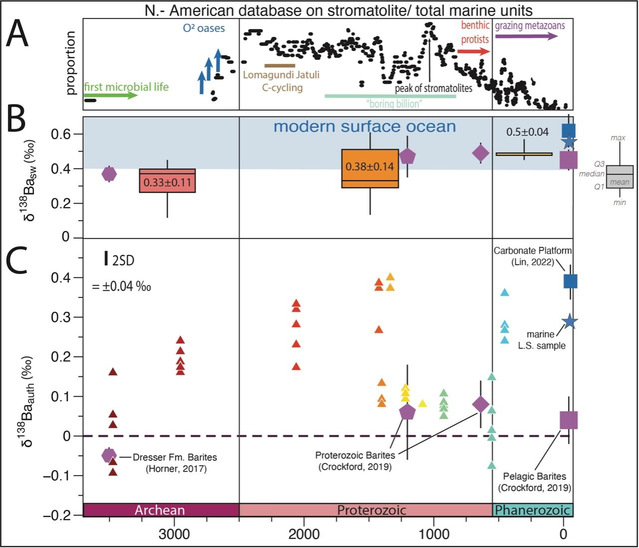Simon V.Hohla, Yi-Bo Linb, Hai-Zhen Weib, Guang-Yi Weib, Sebastian Viehmannc
aState Key Laboratory of Marine Geology, Tongji University, Shanghai, PR China
bState Key Laboratory of Mineral Deposits Research, Nanjing University, Nanjing, PR China
cInstitute of Mineralogy, Leibniz University Hannover, Hannover, Germany
Abstract:
In the search for reliable archives to reconstruct Earth's paleo-surface ocean chemistry, stromatolites have gained much attention in the past decade. Stromatolitic carbonates, i.e., lithified microbial mats, form in shallow neritic environments and have the unique potential to record the ambient water chemistry of the photic zone. Their wide occurrence in shallow marine sedimentary successions from at least ca. 3.5 billion years ago until today highlight these bio-sedimentary archives as excellent recorders of elemental fluctuations in microbial habitats of the near-shore surface ocean, embayed basins, and lacustrine systems. In this study, we test the application of Ba concentrations and its isotopes in Paleoarchean to Holocene stromatolites as a potential deep-time proxy for biogeochemical element cycling in ancient microbial habitats of different depositional environments. Barium systematics in stromatolites reflect biogeochemical Ba cycling in local, aqueous (micro)environments of photic zones under variable oxygen and sulphate saturation conditions. We obtained significant differences in authigenic Ba concentrations and isotopic compositions between open ocean and restricted depositional settings: Microbial communities in restricted embayment or lacustrine environments show distinct negative δ138Baauth values inversely correlated with Ba concentrations due to Ba (re)cycling. In contrast, stromatolites from non-restricted, marine depositional settings have the potential to record ambient seawater Ba isotopic compositions with the heaviest obtained δ138Basw = 0.45 ‰ in the Archean, 0.61 ‰ in the Proterozoic and 0.57 ‰ in the Phanerozoic at a precision of ±0.04 ‰ (2SD).
Our study suggests that variabilities in δ138Ba of stromatolitic carbonates can directly be linked to environmental restriction and associated biogeochemical Ba cycling, probably related to micro-barite formation on microbial biofilms, with subsequent recycling in restricted environments leading to lighter Ba isotopic values in the ambient waters and carbonates. However, stromatolites of open marine settings record local surface ocean δ138Ba compositions and may be used as unique archives in future studies to investigate the evolution of primary productivity in the photic zone through deep-time.
Full Article: https://www.sciencedirect.com/science/article/pii/S0012821X24000724#ack0001



